What Hi-Fi? Verdict
The Clearaudio Compass offers a broad, spacious sound alongside ample detail and an impressively nimble bass signature, but it’s up against more entertaining rivals at this price
Pros
- +
Clean, spacious sound with ample detail
- +
Taut, impressively agile bass
- +
Easy to set up
Cons
- -
Rivals are more rhythmically talented
- -
Could be more dynamically expressive
- -
Untidy paint finish at the rear
Why you can trust What Hi-Fi?
The terms “entry level”, “affordable” and even “cheap” are all, in their own way, completely relative. The cheapest Ferrari you can buy – the Roma – generally retails for around £200,000, but that’s mere pocket change when you could be forking out nearly £400,000 for a red-coated SF90 Stradale.
£1099 / $1500 for a turntable is, in Clearaudio’s world, a bit of a steal. The German hi-fi brand has rarely sunk to such depths of affordability, building its name predominantly on high-end offerings which, thanks to their premium engineering and astronomical price tags, are designed in part to make the neighbours turn an envious shade of green. Want a Clearaudio Statement record player? That’ll be £145,000, please.
That makes the Clearaudio Compass a fascinating proposition. We know that this is a company with the talent to make some serious hi-fi heavyweights – we used to use a Clearaudio Innovation deck in our old reference system – but big-money brands can sometimes struggle to replicate those talents while tethered by a smaller budget.
Time to find out if the Compass can excel in the lower leagues.
Build & design

Clearaudio’s Compass is a handsome, solidly constructed deck.
The aesthetic could well be described as ‘bulky minimalist’ thanks to its substantial wooden plinth, and while it isn’t the biggest in terms of pure dimensions, that main body, combined with a steel bottom plate for additional weight, adds up to a not-inconsiderable 8.4g, significantly more than the 6kg of its Rega Planar 3 RS Edition rival.
Clearaudio’s hi-fi pedigree suffuses the Compass. The turntable’s various components are of a high quality, from the polished steel main spindle to the sleek T1 aluminium tonearm, which derives from Clearaudio’s more premium Satisfy model.
The latest hi-fi, home cinema and tech news, reviews, buying advice and deals, direct to your inbox.
That T1 tonearm supports Clearaudio's own N1 moving magnet cartridge pre-installed on the arm’s removable headshell. Setting up does require calibrating the T1 to the recommended 2.2g tracking weight for the supplied N1 cartridge, but again, we don’t find this to be a particularly taxing task.

Type Belt driven
OperationManual
Speeds 33⅓, 45
Speed change Electronic
Cartridge Clearaudio N1 moving-magnet cartridge
Phono stage? No
Bluetooth? No
USB? No
Dimensions (hwd) 12 x 43.5 x 34cm
Weight 8.4kg
Finishes x 2 (Silver, Black)
We do have one issue, however. While the turntable is mostly smartly finished, looking at the back of our review sample, we find that the paint around the recessed areas surrounding the plug sockets and hinges is surprisingly poor.
We actually had two Compass review samples in our test rooms – one black, one silver – and found the same issues with the finish on both samples.
This largely won’t be a problem for most users who have their record player facing towards them, but it’s just a little disappointing to find on a product that is otherwise beautifully made.
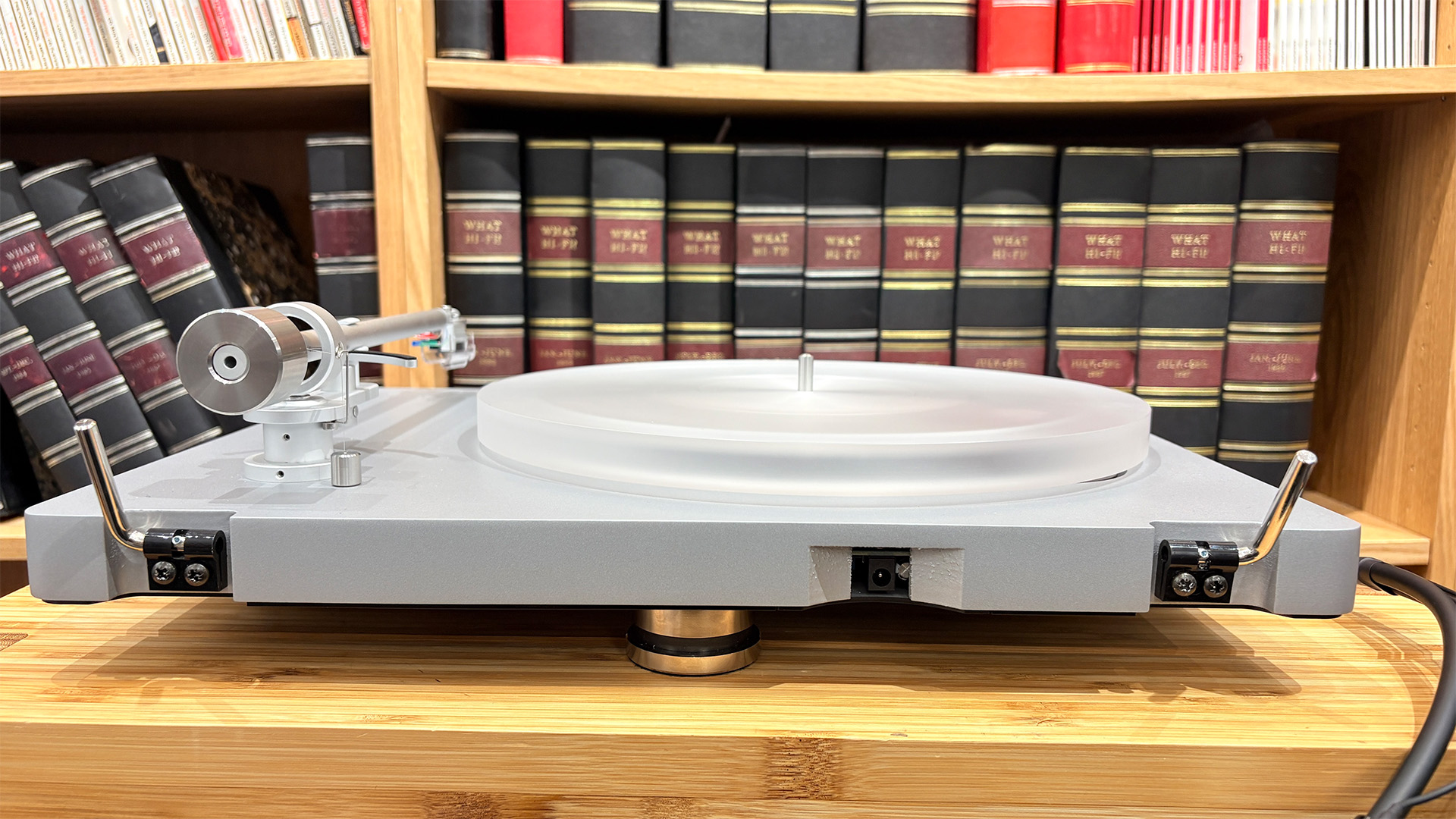
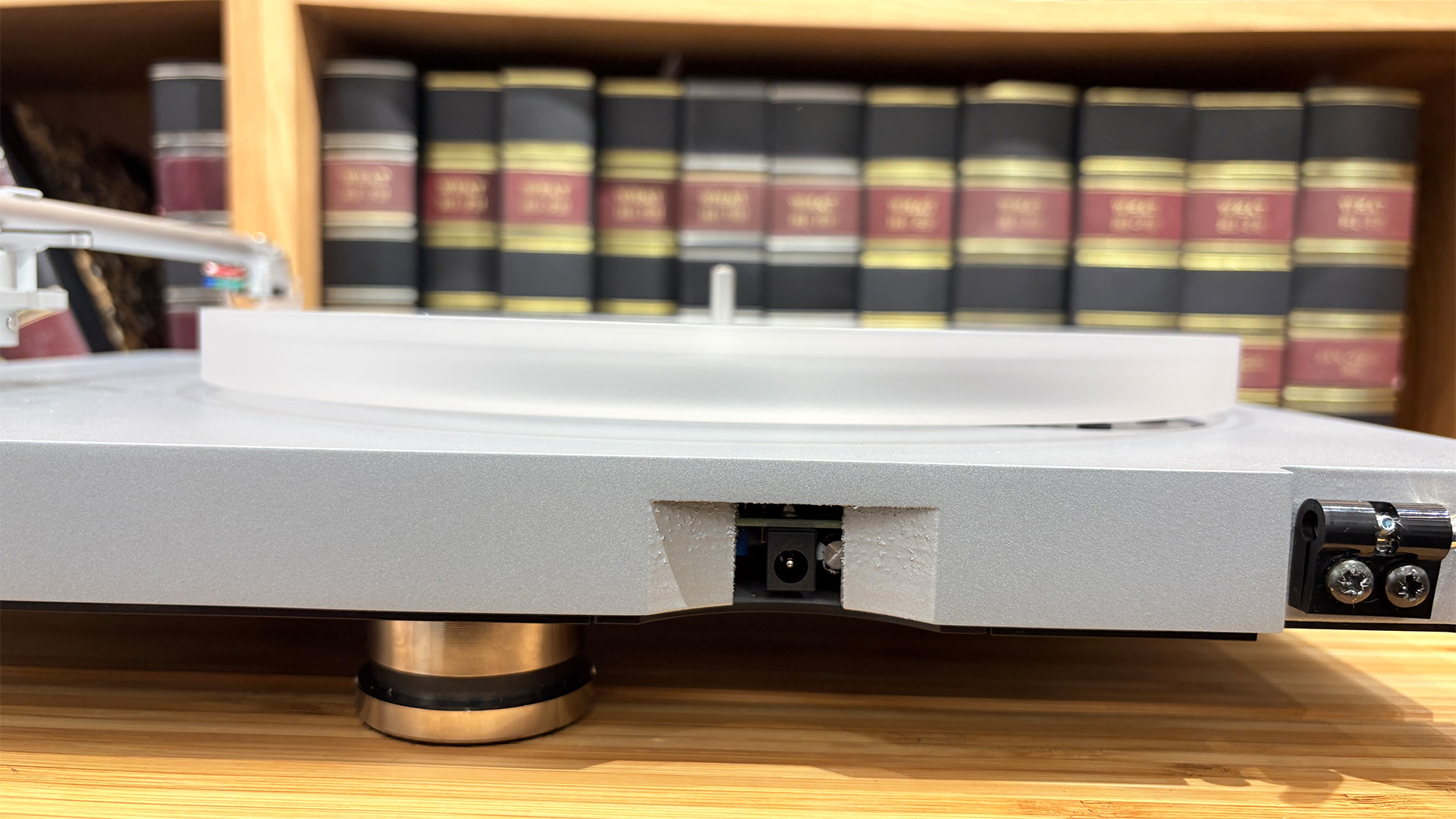
The Clearaudio spinner's main bearing uses a tempered steel spindle with a brass bushing and a Teflon thrust pad. It’s topped off by an aluminium sub platter and an acrylic main platter, all driven by a 12V DC motor via a flat-belt.
Clearaudio’s entry-level turntable is also reasonably simple to set up and use, and while the counterweight doesn’t have numbers marked on it, the company provides a scale to help set it. The platter, mat and acrylic lid all require fitting, too, but those tasks are simple to perform.
A recessed switch on the right hand side controls the deck’s speed electronically (33 1/3 and 45 rpm), and though it might be a tad tricky to access, having that switch hidden away helps to preserve the turntable’s clean, modern aesthetic.
Sound
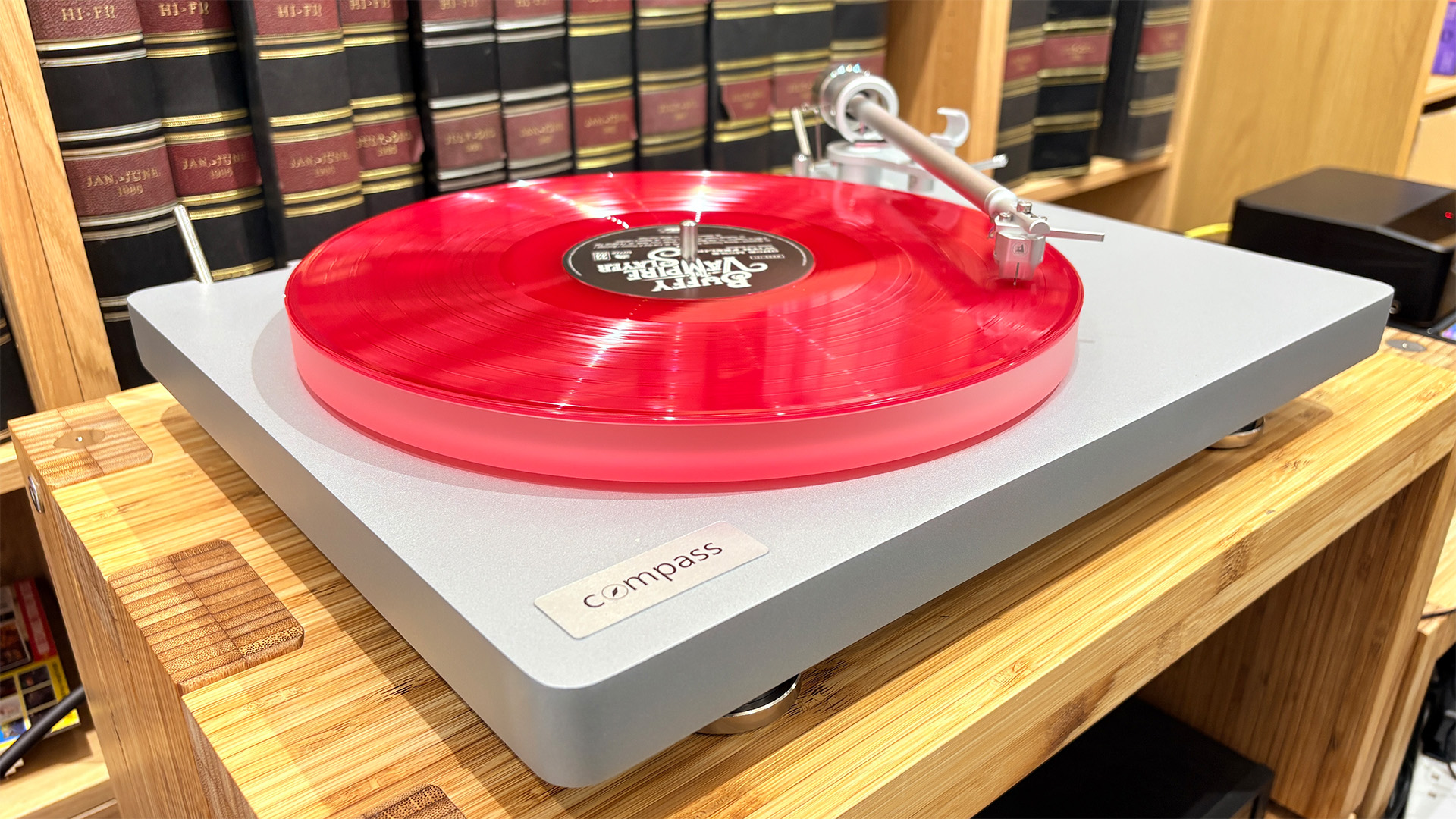
Clearaudio has promised “accessible performance without compromise” from this deck, and the substantial expertise behind the Compass is fully on display as we connect it to our reference system comprising the Naim Nait XS 3 stereo amplifier and a pair of Epos ES-7N standmounts.
The Compass has a mature, controlled sound, showcasing the sort of composure that gives the various records we play a cohesive feel, with no one element, be it screeching treble or saggy bass, negatively drawing our ears.
The overall sonic picture is, in fact, open and spacious. The Clearaudio turntable paints across a broad canvas, delivering a cinematic soundstage onto which various instruments and textures are carefully placed. That overall combination of scale and organisation is a powerful one, and it lends tracks such as Fleetwood Mac’s Dreams and Lukas Graham’s Happy Home an impressive sense of occasion.
As we test and probe the deck’s abilities across a raft of records, it’s clear that the stylish spinner doesn’t struggle when it comes to dishing out the details, either. Be it the delicate, twinkling piano from Bach’s Siciliano In G Minor, Kurt Cobain’s scratchy vocals on Nirvana’s About A Girl or the echoey guitar twangs from The Vestbo Trio’s Mudslide, the Compass infuses textures with both body and bite.
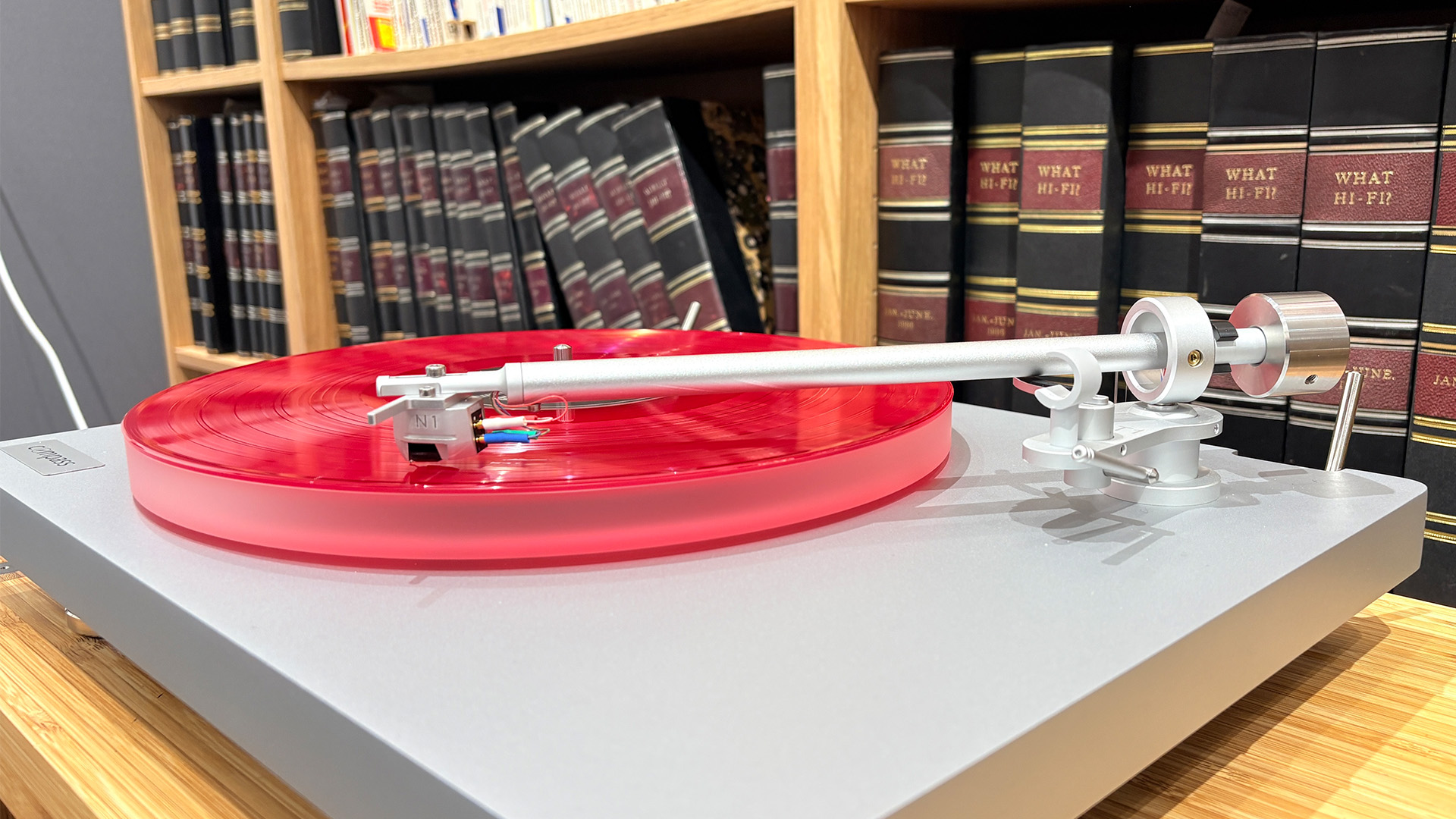
The deck’s bass reproduction, meanwhile, may be its real ace in the hole. This is a turntable which produces a healthy amount of weight in the lower registers, yet never are we left feeling as though that bass is overbearing or lacking in finesse. Quite the opposite – whether it’s Nas’s fulsome N.Y. State Of Mind or Portishead’s hazy Sour Times, the Compass brings out those deeper resonances with outstanding agility and dexterity.
Keen to stretch the Compass’s capabilities, we pull out Michael Jackson’s Bad, and it’s here that we notice a few signs of potential strain. Jackson’s classic record opens with a series of punchy rhythmic stabs before exploding into the zippy, propulsive pomp of the title track, yet we’re left with the impression that the Compass is holding back a little, or that it doesn't have the drive to communicate fully the energy of the music.
The rival Rega Planar 3 RS Edition (£999 / $1795) is noticeably better in this regard, making the track’s funky foundations pop and sparkle with class-leading panache.
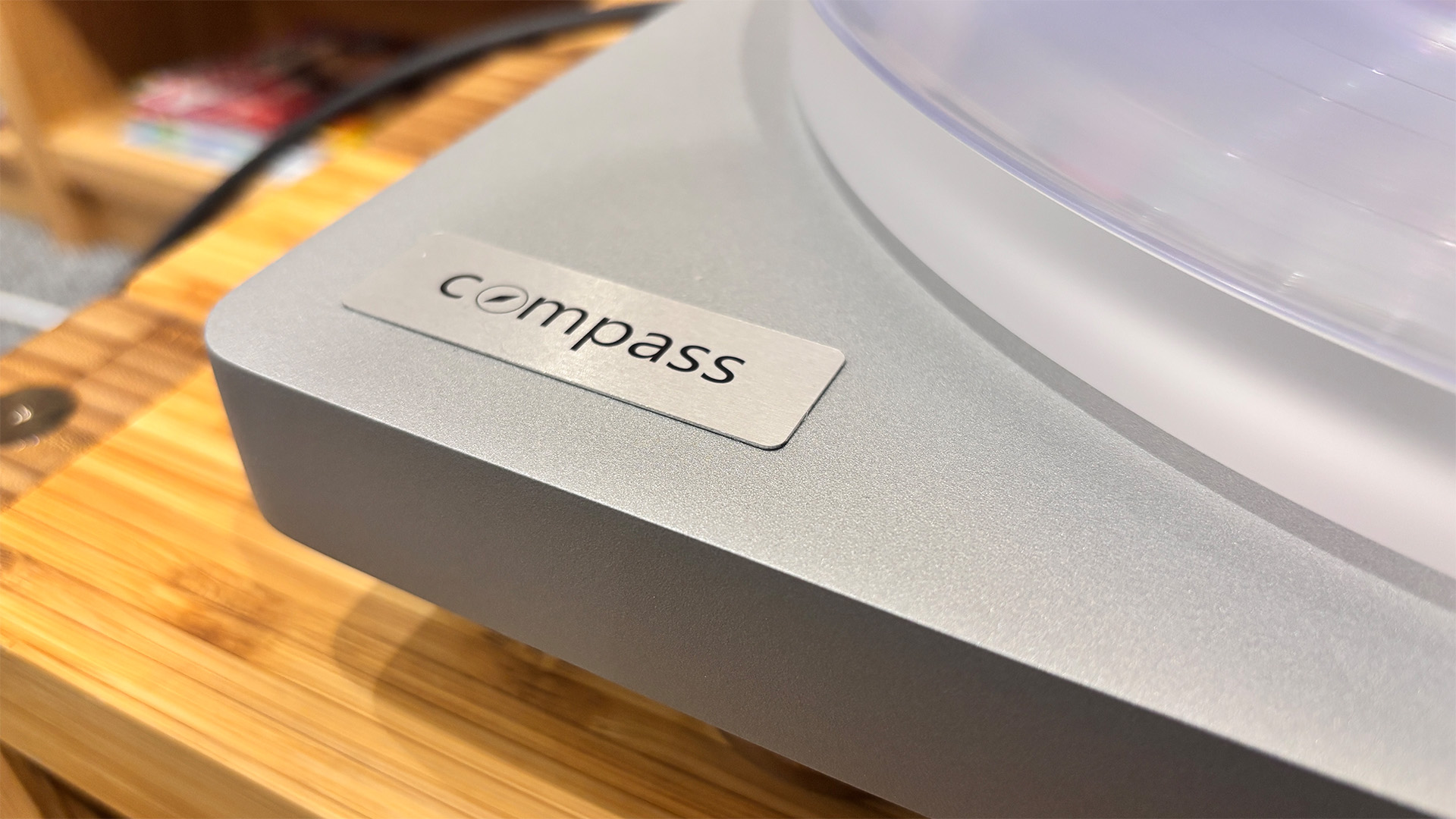
The Rega outshines the Clearaudio dynamically, too, Those initial stabs on Bad don't quite punch through with the same force as they do when we switch to the Rega turntable, and when we revisit Bach’s delicate Siciliano, it’s the RS Edition which shows its class-leading talents, making every stroke of the piano sound distinctive and dynamically engaging. The Compass struggles to keep up, slightly flattening those subtle ups and downs, resulting in a rendition which sounds a touch rote, even mechanical, by comparison.
The Planar 3 RS Edition is, for us, a more involving listen, bringing out the soul and heart of our records with confidence. That said, Clearaudio’s spinner does have its own trump cards, serving up a broader, more open soundstage anchored by that tight, beautifully controlled bass signature. If that sounds like your kind of flavour, it could well be the turntable for you.
Verdict
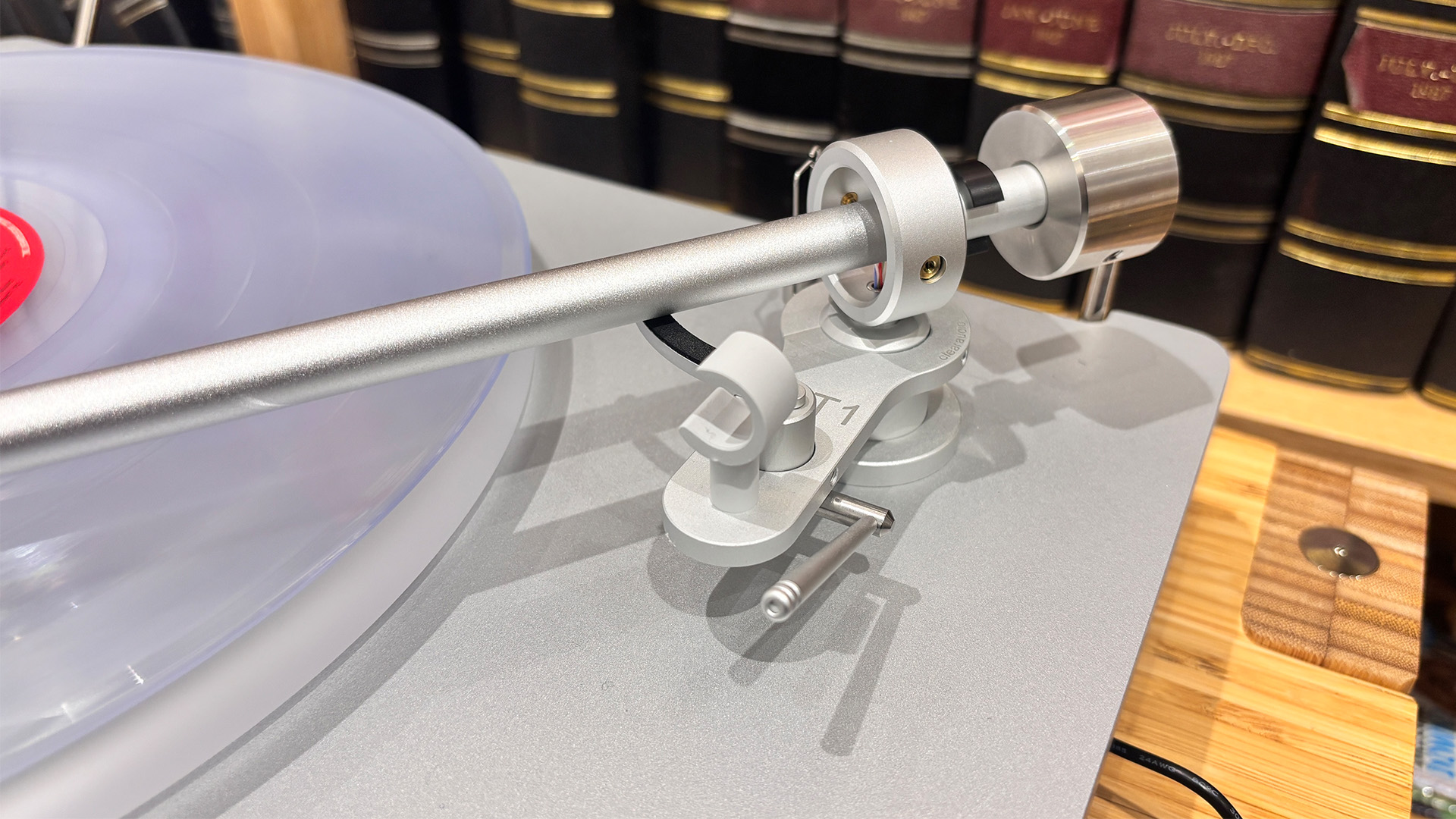
The Clearaudio Compass is a really solid turntable. It has its sonic strengths, particularly with regard to its beautifully handled bass, and we’ve no doubt that its clean, modern aesthetic will have its admirers.
There’s unquestionably some exceptional competition at this level, and rivals will give you more in terms of pure entertainment. But thanks to its ample sonic talents and (generally) high standard of construction, the Compass isn’t lost among the crowd.
Review published: 18th November 2025
SCORES
- Sound 4
- Build 4
- Features 4
MORE:
Read our review of the Rega Planar 3 RS Edition
Also consider the Technics SL-1500C
Best turntables: top record players tested by our expert reviewers

Harry McKerrell is a senior staff writer at What Hi-Fi?. During his time at the publication, he has written countless news stories alongside features, advice and reviews of products ranging from floorstanding speakers and music streamers to over-ear headphones, wireless earbuds and portable DACs. He has covered launches from hi-fi and consumer tech brands, and major industry events including IFA, High End Munich and, of course, the Bristol Hi-Fi Show. When not at work he can be found playing hockey, practising the piano or trying to pet strangers' dogs.
- Kashfia KabirHi-Fi and Audio Editor
- Ketan BharadiaTechnical Editor
You must confirm your public display name before commenting
Please logout and then login again, you will then be prompted to enter your display name.
